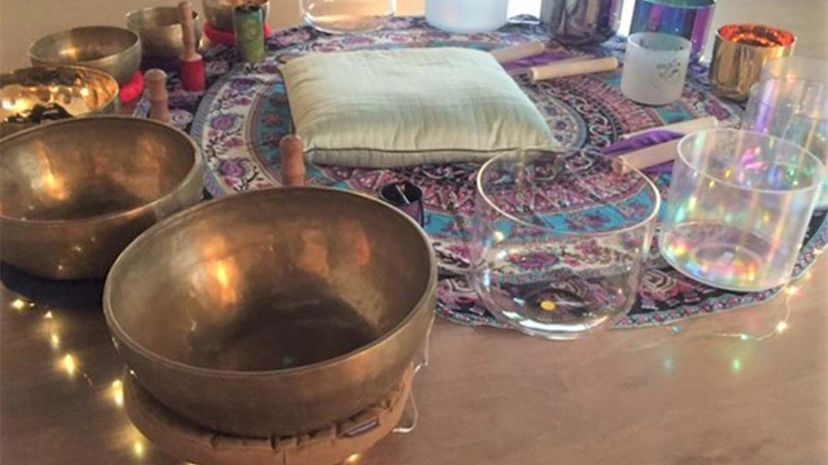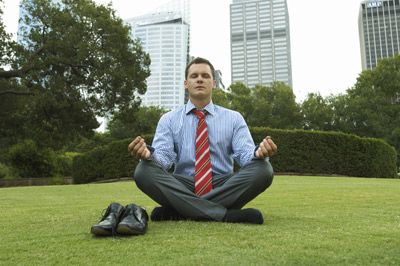Some might dismiss the practice as trendy, but sound bathing is becoming more popular in the West. During a session, an instructor uses various instruments — think gongs, Tibetan singing bowls, crystal bowls and tuning forks — to produce noise and vibrations, and some instructors may accompany the sounds with singing. Participants typically lie on the floor and let the soundwaves "wash" over them.
Sound baths are believed to have numerous healing properties, including reduced anxiety and stress, better mental clarity, improved energy and more restful sleep. Participants also report alleviation of physical pain, positive emotions and inspiration of creativity.
Because sound bath sessions are most often found at yoga or meditation studios, many newcomers sometimes expect a movement-based class. And because the word "bath" is in the name, some expect to get wet. But neither is the case, Bernadette Doran, former director at Equilibrium Energy + Education said when we spoke to her in 2019. (The Chicago studio closed in 2020 due to the pandemic but before that, it offered sound baths.)
"Students just lie on mats and enjoy the sound and vibrations washing over them," Doran said. Though some first-person accounts describe sound bath classes with yoga poses and other types of movement, Doran said that her sound baths require no physical activity and participants need only to wear comfortable clothes.
Like yoga or meditation, most practitioners offer solo sound bath sessions, in which the participant is one on one with the instructor, or group sessions, which are typically limited in size. Doran said her group sessions are no more than 20 participants.


